International Business Assignment: Business Expansion Of UNIQLO In Indian Market
Question
Task: Instructions on International Business Assignment:
Japanese clothing chain Uniqlo has exploded rapidly in the past decades. As the Asia’s biggest clothing retailer, Uniqlo made its much-awaited move in India through opening its first shop (a wholly owned subsidiary) located in New Delhi’s Ambience Mall in October 2019.
Using the case of “Uniqlo entering the India market’, students are required to address the questions below by (1) applying relevant academic theories and literature; (2) using sufficient self-collected research data to adjust and support the answers.
Assignment Brief:
1. By entering the India market, what location-specific advantages can Uniqlo exploit from India Why did Uniqlo open its first shop in New Delhi (Explain generally, based on location advantage etc)
Analyze Uniqlo choose India as a location of choice.
Why did they choose / networks and why they chose
Do not do PESTLE nor Portal 5 forces.
Write more on external factors and briefly on internal
Industry clusters/ network
Include new typology
1.1 External factors
1.2 Internal factors
1.3 The reasons Uniqlo open its first shop in New Delhi
1.4 New typology on the new location (see what is relevant and write, don’t need to write all)
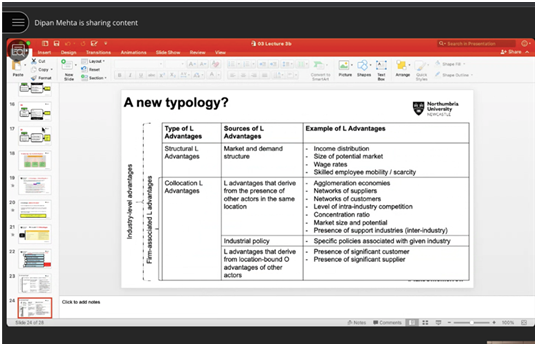
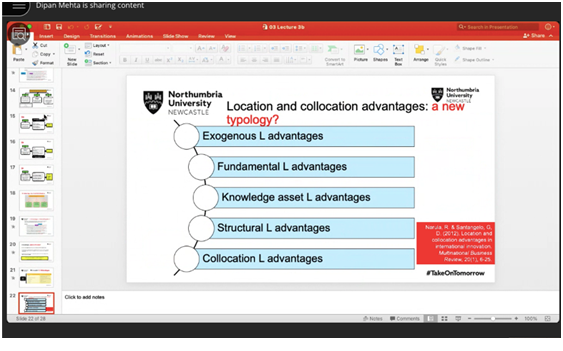
2. Utilising relevant analytical tools (e.g. VRIN), critically analyse Uniqlo’s ownership advantages (Oa/Ot/Oi) that can help Uniqlo to beat rivals in India.
Critically analyse Uniqlo ownership advantages. VRIN table analysis required (anaylze & explained) VRIN + OS (OA / Ownership asset based advantage + OT /Ownership Transactional advantages + OI / Ownership Institution advantages - values/norms etc) that can help Uniqlo beat their rivals in India
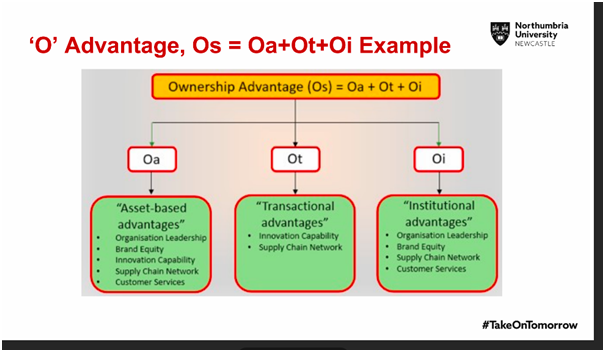
Do VRIN (not VRIO) analysis of Uniqlo going into India. Explain
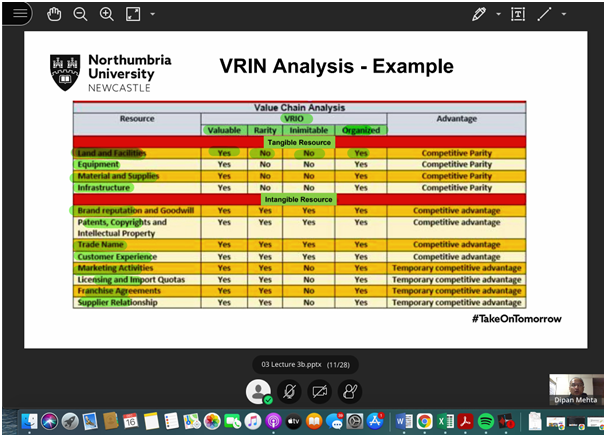
3. How can Uniqlo internalise its ownership-specific advantages (Os: identified in Q2) through the wholly owned subsidiary entry mode in India
Explain what you’ve listed in VRIN (do not put VRIO). 2 to 3 tangible & intangible respectively (min)
OS = OA+OT+OI / Very specified on the OA OT OI. Explanation of the table.
Explain why Uniqlo can / Uniqlo Internalise its ownership-specific advantage
3.1 Organizational Structure (when they entered based on product/matrix Which structure from Japan to India) Write and justified what they did. Choose ONE.
3.2 Centralization vs Decentralization & Subsidiary roles. Uniqlo when they went to India, based more on C or D Justify why. State what is the subsidiary roles (which sub role did they enter into India) Choose ONE and justify.
3.3 HQ-subsidiary relationship. 8.37pm 20 Dec 2021. For HQ subsidiary r/s, how can a company can have global value chain, based on upstream/downstream/ horizontal activities. Explain how this r/s. Justify based on 2 is good enough. CHOOSE TWO.
3.4 The Global Factory - challenges etc. Just tell what are the challenges that Uniqlo may face if they have a wholly owned subsidiary entry mode in India. (Can be more brief as compared to the rest)* write lesser than the other points
3.5 Dealing with forces of change, creating business agility and implementing dynamic capabilities.
Based on ownership advantage with their competitors in India. How they need to beat their rivals and create business (how to be fast/ how they can develop to beat their rivals). How can Uniqlo internalize. How do Uniqlo need to deal with forces of change Create business agility and dynamic capabilities. What can they do to compete with their rivals Specific advantages
4. With reference to different national culture frameworks (e.g. Hofstede etc.), critically discuss both barriers and competitive advantages by comparing the cross - culture differences between Japan and India.
Example:
Min 2 / 3 frameworks, explain 3 to 5 dimensions from the frameworks. Any kind of barrier/competitive advantage of Uniqlo Japan going to India
Hofstepe Insights - Look at uncertainly avoidance (barrier) for Uniqlo going to India, reach country barrier
Trompanses - Ascrbied/Achieve status. Based on Uniqlo going to Japan, its more of achieve status, but in India it’ll be Ascribe
World Value survey
Globe Project - Performance dimension (For India) What they are today, what they should be India performance is low, they shld be higher. So, it is a barrier for them for XXX reasons.
5. Drawing upon relevant innovation literature, critically discuss what type of innovation strategy Uniqlo adopts, and what benefits and challenges Uniqlo could face by building its local innovation networks in India By using this innovation strategy that Uniqlo adopt in going to india, what are some benefits they get/ challenges they could face as they have their local innovation in India. Critically discuss what type of innovation. Innovation means = taking this idea, making it into a real product, selling it in the marketplace to make money Types of Innovations strategy: Incremental / Disruptive/ Sustaining/ Radical/ Product / Service / Process/ Technology innovations Choose 1 innovation Strategy. Explain the strategy, how the company may implement the strategy innovation process Explain min 2 to 3 benefits and challenges, Uniqlo could face building these local innovation networks. Can be about product / service innovation too. Conclusion: Short summary
Answer
1.0 Introduction to International Business Assignment
Business innovation is recognized as a significant mechanism of the organization to launch unique concepts, methods, and work infrastructure for business internationalization. The Japanese clothing organization UNIQLO started its journey in 1949 in Yamaguchi, Japan. It is already recognized as a global textile manufacturing firm with more than 1,000 outlets across the globe. At present, UNIQLO is intended to open its first outlet in the Indian market with innovative ideologies and concepts.
2.0 Location selection of Uniqlo to India
1.1 External factors
2.1 Economic factors
In the selected location, India's economic factors are included in its GDP rate, tax rate, and employment status. The country has grown by around 9.2% in FY 2022, indicating the enhancement of the healthy economic status of the country (tradingeconomics.com). The Indian corporate tax rate has been projected by approximately 25.17% in this year, addressing economic stability. The unemployment rate of the country has been decreased by around 6.90% in September 2021 while compared with August’s rate by approximately 8.30% (The Economic Times, 2022). Henceforth, the country will be accepted as a good business spot for UNIQLO to expand its business market. Arvind Lifestyles Brand Ltd, The Clothing Rental is major competitors in the wear designing to Uniqlo India.
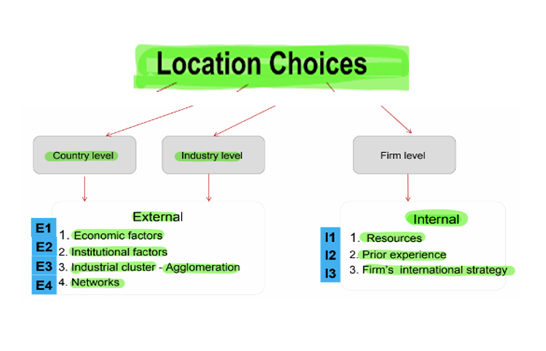
Figure 1: Required factors in location selection for business
(Source: Kaminski et al. 2018)
2.2 Institutional factors
The estimated total population across India is 1.38 billion in the 2020 report analysis ("India - total population", 2022). Becoming a gigantic customer market, there is a huge scope for UNIQLO to expand its business network smoothly. It is also considered a multi-religious, multi-lingual, and multi-ethnic country with a strong communal harmony. Through the implication of the Equality Bill of 2021, and Industrial disputes Act 1976, the country is maintaining a conflict-free ambience.
2.3 Industrial cluster agglomeration
The textile industry value was estimated at US$140 billion in 2017 in India which was enlarged by around US$223 billion in 2021 ("India: textile industry market", 2022). Through the adherence to the new legal provisions and policies by the Indian Government, the textile workforce will create around 17 million jobs in 2022. The “Smart warehousing” concept has acknowledged the acceptance of AI, and Robotics for autonomous checking of the resources and most-demanded product level. The launching of schemes such as “Atmanirbhar Bharat” has helped the new players to boom in the competitive textile industry. The “technical textile” concept has also created a fast-growing approach in the textile sector by estimating its CAGR of 9.6% in 2023 (Dixit and Lal, 2019). Arvind Lifetsyle Brands Ltd and Clothing Rental are two major competitors of Uniqlo and the company has so many advantages in India including cost reduction, quality materials and high demand of wear designing in the market.
2.4 Networks
The country is using the concept of a “three-tier distribution and selling” through which the business enterprises can distribute their completed services or goods to the distributors, retailers, and wholesalers. Through the acceptance of the transportation networks such as railways, flights, maritime, and advanced drone technology, the product delivery services have been faster, indicating the scope of business growth for UNIQLO.
1.2 Internal factors
2.5 Resources
The key internal resources of UNIQLO are efficient employees, technology, and capital. The diverse work culture has created an inclusive workforce with zero gender inequality and discrimination against race, age, culture, and skin colour. The management seeks assistance from their Audit analysts to explore proper investment processes in making a technical textile, smart manufacturing units, investment in the R&D section, and an employee's professional training sessions.
RBV Model
Based on the application of RBV model it can be stated that resources are having two types including tangible and non-tangible. Financial, organizational, physical and technological resources are key tangible resources within the organization. On the other hand, goodwill, trademark and copyrights are key intangible resources of the company.
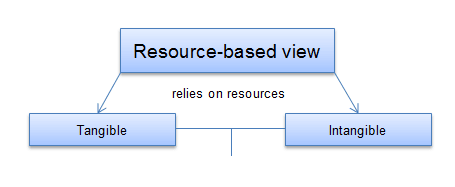
Figure 2: Resource Based View
(Source: Collins, 2021)
2.6 Prior experiences
People, society, and the planet are three pillars for UNIQLO and henceforth, the business enterprises have been able to possess a global brand value of US$13 billion in 2021 ("Uniqlo: brand value", 2022). The waste management unique principles such as recycling and plastic reduction concept have made it sustainable in the dynamic business environment.
2.7 Firm’s international strategy
To become sustainable in the global market, the management has accepted the “workforce diversification” policy. Besides, UNIQLO management has considered the “product diversification strategy” by collecting direct information from their target audience through the “Ariake Project Tool'' ("About Uniqlo", 2022). Their sustainable strategies such as “Blue cycling jeans' ', “down recycling”, “plastic banning”, “carbon footprint reduction” have helped to become globally sustainable.
1.3 Reasons for opening Uniqlo’s first outlet in New Delhi
Based on the overall analysis of external and internal factors of UNIQLO, it has been revealed that the firm is intended to expand its network chain in the growing textile markets across the world. As India is considered as a growing market for textile and cotton, as well as wool, and recycled polyester availability rate across the country is moderate, the firm is intended to attract the Indian customer for their profit enhancement and acceleration of global brand valuation.
1.4 Unique typology on the new location
|
L advantage types |
Sources of L advantage |
Examples of L advantage |
|
Structural L advantage |
Demand and market structure |
- Potential market size - Efficient staff - Income parity |
|
Collocation L advantage |
Deriving from the presence of other attributes in a similar location |
- Economic agglomeration - Supplier’s networks - Customer’s networks |
|
Exogenous L advantage |
Political stability and weather type |
- Right legal provisions - Transportation risk rate - Delivery delay |
|
Fundamental L advantage |
Revenue and profit margin growth |
- Sales intensity rate - Profit per product - Customer’s demand rate |
|
Knowledge L advantage |
Innovation and team dynamics |
- Knowledge sharing - Participative decision-making - Creativity enhancement in products |
2.1 Critical analysis of Uniqlo’s ownership advantages
2.1.1 VRIN analysis
The VRIN analysis is an important tool for evaluating and determining a financial operation, as well as determining its strategic advantage and competitiveness. The corporate strategy tool enables the identification of a long-term competitive advantage for a company by analysing the company's resources and capabilities, while also trying to assist the business in recognising its core capabilities to improve a sustainable long-term market advantage. Depending on the characteristics of the VRIN, the analysis is done to determine competencies and resources.
|
Resource names |
Valuable |
Rarity |
Inimitable |
Non-substitutable |
Advantage |
|
Land and facilities (tangible) |
Yes |
No |
No |
Yes |
Competitive parity |
|
Equipment (tangible) |
Yes |
No |
No |
Yes |
Competitive parity |
|
Material and suppliers (tangible) |
Yes |
No |
No |
Yes |
Competitive parity |
|
Infrastructure (tangible) |
Yes |
No |
No |
Yes |
Competitive parity |
|
Customer experience (intangible)
|
Yes |
Yes |
yes |
Yes |
Competitive advantage |
|
Supplier relationship (intangible) |
Yes |
Yes |
Yes |
Yes |
Temporary competitive advantage |
According to, Competencies that are valuable help UNIQLO for capitalizing their opportunities and mitigate challenges from the surrounding environment. These skills enable this organization to expand, flourish, and develop its business in the Indian market. Brand image and social responsibility of the organization are the most significant valuable factors for the organization. UNIQLO participates in social responsibility activities regularly and makes this public. The UNIQLO brand image has changed through time, because of the company's continuous efforts and high-quality service offerings. The marketing strategy promotes UNIQLO's confidence and credibility.
The UNIQLO supply chain is well regarded around the world. In addition, the firm has effectively given services and made them highly affordable in areas where system operations do not exist. This is a valuable resource for the corporation, allowing the UNIQLO Company to capitalize on additional possibilities in different areas and nations throughout the world. UNIQLO's service and product offerings are very innovative (Salas-Wright & Schwartz, p. 2019). Competencies that are rare in nature are occupied and developed just by a few organizations in the industry, and they contribute significantly to UNIQLO's strategic advantage (Buzatu, Pleea, &Valentin, 2019). UNIQLO has an international influence and is present in various nations and regions. Therefore, this is an uncommon competence for the organization, helping it to minimize possible risks while capitalizing on possibilities. UNIQLO is a multinational corporation with worldwide expansion and an international presence. Such localization is important for the organization to develop a presence in various local marketplaces.
The capability of UNIQLO to accommodate various external conditions and regional cultures is a rare resource that has permitted the firm to enhance integration, efficient and effective system, improve brand recognition, and gain exposure (Morales et al. 2019). These inimitable competencies contribute to the organization's competitiveness and long-term sustainability. Competing businesses find it tough and pricey to replicate these capabilities and competencies. UNIQLO has effectively used marketing messages to raise its revenues. The non-substitutable resources were designed specifically for UNIQLO and cannot be utilized by competitors in the market.
2.1.2 VRIN + OS analysis
Ownership advantage
Specific advantages of ownership related to the product differentiation of firms wanting to engage in foreign direct investment (FDI). The higher the investing companies' competitive edge, the more likely they are to participate in international manufacture (Brodhead, 2019). Uniqlo maintains product planning, designing, production, and transportation, permitting them to execute at a relatively low cost. Since there is a direct relationship between both the tales and a dependable set of manufacturers, what is sold is immediately converted into manufacturing requirements.
Asset-based advantage
An asset-based model promotes and appreciates a community's capabilities, information, contacts, and prospects. Asset-based methods focus on rectifying the balance between the two needs and growing people and organizations' resources and capabilities. The asset-based advantage for UNIQLO is they are high-quality products and performance-enhanced, basic casual clothes at the most reasonable pricing. Their clothes are fresh and attractive, their in-house concept and fabric invention quality leadership and one-of-a-kind functional ability.
Transactional advantage
The transaction strategy is the principle of estimating a firm's financial performance by collecting individual profit, expenses, and other purchase transactions. These transactions are then combined to determine if a company made a profit or a loss.
Institutional advantage
A company, while having an institutional market advantage, is executing a program that involves different activities and resources supported by its connections with the organisational framework and provides economic benefits that exceed that of its competitors.
Uniqlo has a unique brand vision. Its outfit is modern and fashionable, yet it is not trendy(Alsswey& Al-Samarraie, 2021). Its in-house architecture and fabric design provide exceptional and one-of-a-kind functional ability. Uniqlo delivers "one-size-fits-all" items that may be utilized wherever.
3. Internalization of Uniqlo
Explanation of tangible and intangible resources
There are two types of resources: tangible resources and intangible elements. Physical factors are considered tangible commodities. Land, houses, apparatus, equipment, and investment are all tangible capital. Intangible services are effectively preserved within an organization and are the fundamental determinant of long strategic advantage (Benoliel & Berkovich, 2018). In terms of the ownership, advantage of Uniqlo the business can assess dynamic capabilities for instance, organizational agility, which can assist the company to rapidly respond and adapt environmental amends. Hence, the resources of the business that can be depicted as complex to imitate and unique might provide to sustainable advantages to competitors. Thus, the rivals of Uniqlo in India can be defeated with change agility and seizing scopes. Moreover, the dynamic capabilities can be helpful for Uniqlo to assess new market opportunities in India so the business can mitigate the forthcoming threats through advantages. Uniqlo's organizational approach has indeed been to "completely avoid fashion" rather than following fast-fashion movements like its rivals. The "Made for All" corporate brand enables their products to overcome age, gender, nationality, and other such ways to identify an individual.
3.1 Organizational Structure
During the penetration in the Indian market from its Japan market, UNIQLO management accepted the “team-based organizational structure”. Through this type of organizational structure, the business organization has been able to reinforce effective problem-solving approaches and situational-based participative decision-making. This type of organizational structure has enhanced the scope of team dynamics, group thinking, team coordination, and mutual understanding approaches among the diversified teams (Annosi et al. 2020).
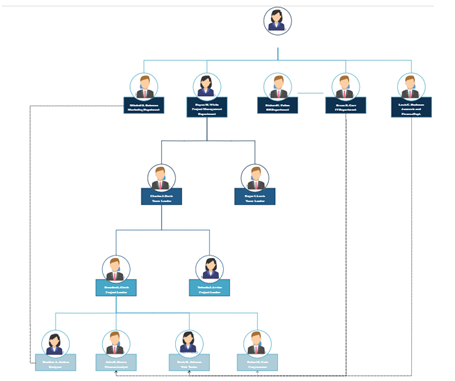
Figure 3: Team-based organizational structure
(Source: Martini et al. 2020)
Through this structure, UNIQLO has been able to rapidly share the business-relevant information to resolve the existing and upcoming barriers for enhancement in brand recognition and goodwill at the Indian marketplace. As the employees are the key weapon for organizational growth and sustainability, this type of organizational structure has helped UNIQLO to accelerate the team innovation spirit in product diversification and customer’s wider satisfaction for maximized profit earnings.
3.2 Centralization vs. Decentralization & Subsidiary roles
The continuous and systematic centralization of authority at central points is considered to be centralization. But on the other hand, Decentralization is the purposeful delegation of authority within an organization. A small organization should be centralized, but a large organization should be decentralized. Hence, Uniqlo followed decentralization while moving to India since it is a significant business. Fast Retailing Co. Ltd and Wing Tai Clothing SdnBhd have combined to have become UNIQLO Malaysia. Subsidiary role depicts to be amalgamated by the parent association wherein the strategy of subsidiary role of Uniqlo has been the self-determination of the business. Thus, entering in India as a subsidiary of Uniqlo has been significant for the business as strategic subsidiary. Therefore, the role of subsidiary that has been assessed by Uniqlo is strategy subsidiary to diminish competition.
3.3 HQ-subsidiary relationship
The two main organizational elements that characterize international corporations are headquarters and subsidiaries. Headquarter located charter deficits at subsidiaries are always the outcome of the MNC's headquarter rethinking its strategic goal. UNIQLO is part of the Fast retailing organization, along with various other companies including COMPTOIR DES COTONNIERS, Helmut Lang, and Theories, among others, all of which could be viewed on this website. Yamaguchi, Japan is the HQ of UNIQLO but they have planned to expand their business in INDIA in 2019. For HQ subsidiary Uniqlo can assess worldwide value chain in terms of a reduced amount of upstream than for downstream can be followed.
3.4 Global Factory
UNIQLO now has approximately 450 production members of the team and textile Takumi (skilled craftsmen) functioning in development and promotion in Ho Chi Minh City, Shanghai, Jakarta, Dhaka, Istanbul, and Bangalore. Each week, producers and directors visit partnership factories to address lingering difficulties. Since 2017, they have been providing and maintaining an annual summary of key sewing companies*, intending to provide a list of all sewing production lines with which they have continuous business contacts in March 2022. Entering as a wholly owned subsidiary Uniqlo might face challenges from its competitors as India has diverse parent organizations having subsidiaries in India only. Hence, it can affect Uniqlo entering as a wholly owned subsidiary in India.
3.5 Dealing with forces of change, creating business agility and implementing dynamic capabilities.
How they need to beat rivals and create business
To compete with their rivals and beat them the company needs to follow these five-step process-
Firstly, Uniqlo needs to find the gap in the clothing industry of India as there are already many clothing brands competing in the Indian market. However, Uniqlo can position itself by solving the problems of Indian consumers which are not resolved yet, like good quality inexpensive clothes, exposure to western clothes, new designs and many more such gaps. Secondly Uniqlo can choose this gap as their niche and conduct various marketing campaigns involving required storytelling and highlighting the current gap in the clothing industry and thus revealing how Uniqlo is resolving that problem for the consumers. Thirdly the company now must set strong competitive pricing rates as this market is already saturated with many clothing brands. This way by changing the niche of the business the company can change its whole operations of business and can stay ahead of the competition. Lastly provide extraordinary customer service as Indian consumers value great customer service.
How can Uniqlo internalize
As mentioned above, a team based organizational structure shall be applied in the business. Therefore, to internalize the process the employees must not be overwhelmed with brand new concepts instead they must summarize the new concepts and synthesise with new knowledge accordingly. This also requires the company to allow and facilitate more internal connections within the organization by regular interaction among the employees. Moreover, the Uniqlo shall approach problems with different angles as well instead depending upon their past experiences within other countries.
How can Uniqlo deal with forces of change
The critical driving forces of change in the company can be technological, demographic, social, environmental and geopolitical. Uniqlo can deal with these changes by hiring an Indian expert in this field as the company is operated on a wholly owned based subsidiary which cuts its help from other companies of the similar industry. Thus, the company must outsource this work in order to stay competitive, protected and regulate its operations and policies accordingly.
Business agility and implement dynamic capabilities
Uniqlo can create strong business agility by shifting its organizational culture as per the requirements of Indian consumers. Furthermore, Uniqlo needs to recognize multiple agile approaches of dealing with consumers by equipping and enabling the employees with all the power needed to develop. Moreover, Uniqlo must push for continuous learning and innovation as it is the first time they have launched in the Indian market and the culture, consumer behaviour and consumer preferences are very diversified in India.
Uniqlo can implement their dynamic capabilities by a three-step process-
Scanning- Researching the gap in the Indian market of clothing.
Identification- Recognizing the opportunities available to cater the market.
Reconfiguration- Adapting the researched niche and changing the business operations accordingly.
Thus, Uniqlo can implement their dynamic capabilities in the Indian market and its first shop in the ambience mall. at New Delhi.
4. Barriers and competitive advantages
4.1 Different national culture frameworks
Hofstede’s cultural framework
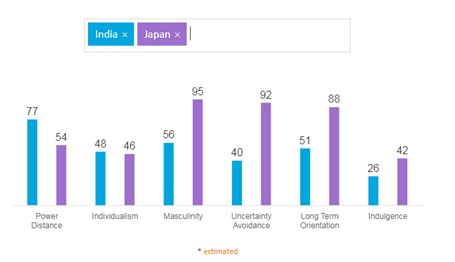
Figure 4: Hofstede’s cultural framework
(Source: Bailey, 2022)
Geert Hofstede's Cultural Dimensions Theory provides a concept used to analyse different aspects among cultures and to determine how the company is done across various cultures (Ariwibowo et al. 2021). According to Hofstede, Culture has been defined by six categories, Power Distance Index, Collectivism vs. Individualism, Uncertainty Avoidance Index, Femininity vs. Masculinity, Femininity vs Masculinity, and Restraint vs. Indulgence, Short-Term vs. Long-Term Orientation. The power distance needs to take into account the amount to which inequalities and power are allowed. In this aspect, inequality and dominance can be seen through the eyes of the follower - the lower level. Individualism vs. collectivism is a concept that analyzes how people are absorbed into groups, as well as their considered duties and reliance on gatherings.
The uncertainty avoidance index needs to take into account how much unpredictability and uncertainty may well be endured. This dimension encompasses how uncertain circumstances and unpredictable problems are addressed (Beugelsdijk and Welzel, 2018). The masculinity vs. femininity aspect is also referred to as "tough vs. delicate," and it plays an important role in society's demand for performance, attitude regarding equality of the sexes, attitude, and so on. The factor of long-term orientation vs. short-term perspective examines how society perceives its historical horizon. UNIQLO has used this frame to enhance their productivity and business in the Indian market.
Schwartz cultural framework
Shalom Schwartz, an Israeli sociologist, established a model for cultural norms and a map about where different locations of the world belong in this framework in the 1990s. Schwartz researched individuals in virtually every country to see just how significant every one of the values that the multinational organization could think of was to people.
4.2 Hofstede Insights
A culture with a power distance index of UNIQLO allows injustice and power inequalities to promote bureaucracy and it have a better idea of the appropriate ranking and leadership. A low power distance of UNIQLO implies a thought flat organizational structure with decentralized decision-making accountability, participatory leadership style, and a concentration on power-sharing. Individualism of this organization implies a higher effort into achieving specific goals. The differences in the culture of India and Japan can emerge as a barrier for Uniqlo to enter the Delhi market. Collectivism implies that significant importance is placed on the company's objectives and well-being.
4.3 Trompenaars' model
Trompenaars' model of national difference in culture was designed by Fons Trompenaars and Charles Hampden-Turner as both a platform for cross-cultural communication within an organisation's economics and management (Minkov et al. 2020). A large-scale assessment of 8,841 managers and organization employees from 43 countries has been conducted. In terms of the Trompenaars model the status of a business moving global can be achieved and ascribed. Thus, in the matter of Uniqlo it can be ascribed while moving to India as a wholly owned subsidiary.
4.5 World Value survey
According to (Bailay, R., 2022), Uniqlo, the third-largest clothing company after Zara of Spain and H&M of Sweden, entered The Indian market in October 2019, months before such a devastating Covid-19 virus suddenly hit India, deciding to leave physical retail stores struggling to recover from massive losses and putting extra inventory levels as India demonstrated months of lockdown from March 2020 onwards to overcome the virus's expansion.
Uniqlo India revealed an 86 per cent annual growth to Rs 239 crore for the financial year ending March 2021, up from Rs 128 crore in 2019-20, notwithstanding a 43 per cent reduction in a net loss to Rs 36 crore from the earlier year.
According to Registrar of Companies (RoC), information recorded by predictive analytics portal Tofler, Japan's biggest clothing retailer's entire costs in India for the year reached Rs 275 crore, up from Rs 192 crore the earlier year.
Analysts think Uniqlo's performances in 2020-21 would be impressive, despite the reality that its locations, like all other brick-and-mortar companies, will be inactive for months. Uniqlo also opened its e-commerce website in India in July (Bailay, R., 2022).
4.6 Global Project
According to LEE et al. (2020), The globe project, UNIQLO develops such a diverse variety of items because their growth strategy incorporates the whole garment manufacturing operations, from planning through designing, fabrication, and retailing. UNIQLO's R&D centres have always been researching the most recent and advanced material and international fashion choices.
Performance Dimension
Uniqlo is global Japanese fast fashion brand that has been competing on design innovation, quality and affordability. In India, the fashion retail industry has high demand and this is why it is continuously growing. The main problem is political instability and that creates issue in the organizational performance.
5. Innovation strategy
5.1 Type of selected innovation strategy
Innovation strategy is defined as an effective mechanism through which the accelerated scope of market share and profit acquisition in the dynamic market can be accomplished via creativity fostering in service and products in the business. Business enterprises need to clarify the strategic objectives and vision with frugal ideologies alignment (Müller et al. 2021). Innovation strategy ensures the business is in a new direction with innovation in the services or goods for standing in the highly competitive market. For the business expansion in the Indian marketplace, the UNIQLO management has considered the “disruptive” innovation strategy.
5.2 Explanation of the identified innovation strategy
Disruptive innovation strategy is defined as a strategic innovative concept through which the transformation of the services and products can be evaluated into affordable and simple options for traditional unmarketable and bottom-tier customer base (Hopp et al. 2018).
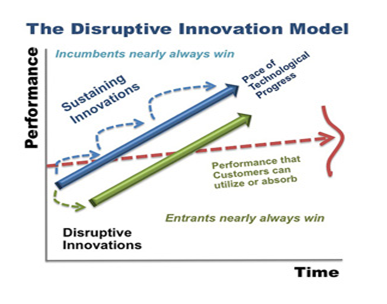
Figure 5: Ideology of Disruptive Innovation strategy
(Source: Voigt et al. 2021)
This type of innovation strategy is not engaged in the improvement of existing services or products, rather than focusing on the evaluation of completely new services or products. Disruptive innovation needs advanced technology, a coherent value network, and a unique business model.
5.3 Implementation process in UNIQLO
Through this type of innovation strategy, the UNIQLO management may examine their existing services and products, areas required for amendments, the appearance of opportunity, and consumer trends for betterment in profit score and sustainability index. Implementation of the disruptive innovation in this firm may offer unique products and price competition in the dynamic market ground (O’Reilly and Binns, 2019). To become sustainable in the Indian market, the selected firm may incorporate the disruptive innovation concept with the emerging technologies such as AI, Cloud Computing, Big Data, Robotics of the country.
5.4 Benefits and drawbacks Uniqlo could face during its Indian innovation networks
Benefits
Internal market penetration opportunity: The significant preliminary benefit of disruptive innovation strategy is the availability of disruptive technologies such as Artificial Intelligence, Robotics, Big Data, and Cloud Computing. Through the implication of AI and Robotics technology-oriented disruptive innovation, UNIQLO could experience automation in product’s under-stocking and overstocking situation in its inventory department (Petzold et al. 2019). Big Data could help the firm to gather estimated ideologies on monthly sales intensity and sales volume to calculate the estimated value of the sales index in a year. Cloud Computing technology could help the firm to protect their confidential business data while appearing in the e-commerce market for internationalization.
Start-up scopes: Through the disruptive innovation process, the fast-growing business model concept can be evaluated. Henceforth, the start-up leaders of UNIQLO in its Indian market could acknowledge the adoption of emerging technologies such as AI, Big Data, and acceptance of the “Workforce Diversity” concept for quicker growth in the profit score. Business process up-gradation: The established business of UNIQLO could smoothly align the disruptive innovation strategy in their business process, sales tactics, and market promotional methods. The disruptive technology-oriented innovation also could enable their Indian consumer base in a transition via capturing new buyers from the competitive textile market.
Challenges
Unproven implications: The UNIQLO management may have doubts whether the innovative products will have high longevity power and higher acceptance rate by the Indian consumers or not as it was not previously evaluated.
Early performance obstacles: The Z-generation consumers are familiarized with new application software and henceforth, constant patches and updates are needed to mitigate the glitches (Cozzolino et al. 2018). It could be challenging for the selected firm to attract the consumers in case they are unfamiliar with the constant up-gradation of their e-commerce portals and websites regarding informative content, website’ styles, and SEO types.
Unprocessed innovations: The earliest use of the unrefined and untested emerging technologies in the UNIQLO workplace could generate clunky prototypes. It could hinder the market growth and appearance of innovative items.
Conclusion
Finally, from the above analysis on international business assignment, it can be concluded that both internal and external factors have a tremendous contribution to estimating the profit scale in the competitive Indian textile market for UNIQLO. Through VRIN and ownership advantage analysis, the brand value and product differentiation tactics of the firm in the competitive edge are acknowledged.
References_APA(6th)
About Uniqlo | UNIQLO. (2022). Retrieved 21 January 2022, from https://www.uniqlo.com/eu/en/company/
Alsswey, A., & Al-Samarraie, H. (2021). The role of Hofstede's cultural dimensions in the design of user interface: The case of Arabic. AI EDAM, 35(1), 116-127.
Annosi, M. C., Monti, A., & Martini, A. (2020). Individual learning goal orientations in selfmanaged teambased organizations: A study on individual and contextual variables. Creativity and Innovation Management, 29(3), 528-545. Retrieved on 20th January 2022 from https://onlinelibrary.wiley.com/doi/pdf/10.1111/caim.12377
Ariwibowo, P., Saputro, F. B., &Haryanto, H. (2021).Analysis of Strength & Weakness, Using the Concept of Resource-Based View with the VRIO Framework in Sharia Cooperatives.JurnalManajemenStrategidanAplikasiBisnis, 4(1), 279-294.
Bailey, R., 2022. Uniqlo India reports an 86% jump in FY21 sales. [online] The Economic Times. Available at:
Benoliel, P., &Berkovich, I. (2018). A cross-national examination of the effect of the Schwartz cultural dimensions on PISA performance assessments. Social Indicators Research, 139(2), 825-845.
Beugelsdijk, S., &Welzel, C. (2018). Dimensions and dynamics of national culture: Synthesizing Hofstede with Inglehart. Journal of cross-cultural psychology, 49(10), 1469-1505.
Brodhead, M. T. (2019). Culture always matters Some thoughts on Rosenberg and Schwartz. Behaviour Analysis in Practice, 12(4), 826-830.
Business News Today: Read Latest Business news, India Business News Live, Share Market & Economy News | The Economic Times. (2022). Retrieved 21 January 2022, from https://economictimes.indiatimes.com/
Buzatu, A. I., Pleea, D. A., Iulian, C., &Valentin, W. P. (2019). Managing organizations for sustainable business development: Interaction between VRIO framework and Mckinsey 7s framework. International business assignment New trends in sustainable business and consumption, 243-251.
Collins, C.J., 2021. Expanding the resource based view model of strategic human resource management. The International Journal of Human Resource Management, 32(2), 331-358
Cozzolino, A., Verona, G., &Rothaermel, F. T. (2018).Unpacking the disruption process: New technology, business models, and incumbent adaptation.Journal of Management Studies, 55(7), 1166-1202. Retrieved on 19th January 2022 from https://researchrepository.ucd.ie/bitstream/10197/9565/4/Cozzolino_et_al-2018%20JMS%20Accepted%20Vers.pdf
Dixit, P., &Lal, R. C. (2019).Inclusive Growth and Social Responsibility-A Critical Analysis of Indian Textile Industry.MERC Global’s International Journal of Management, 7(2), 202-210. Retrieved on 20th January 2022 from https://www.researchgate.net/profile/Pankaj-Dixit-3/publication/332711083_Inclusive_Growth_Social_Responsibility_-A_Critical_Analysis_of_Indian_Textile_Industry/links/5ccdc50f299bf14d95781c98/Inclusive-Growth-Social-Responsibility-A-Critical-Analysis-of-Indian-Textile-Industry.pdf
Hopp, C., Antons, D., Kaminski, J., & Oliver Salge, T. (2018). Disruptive innovation: Conceptual foundations, empirical evidence, and research opportunities in the digital age. Journal of Product Innovation Management,35(3), 446-457. Retrieved on 21st January 2022 from https://www.researchgate.net/profile/Christian-Hopp/publication/324701766_Disruptive_Innovation_Conceptual_Foundations_Empirical_ Evidence_and_Research_Opportunities_in_the_Digital_Age/links/5adf3e4ba6fdcc29358e0e82/Disruptive-Innovation-Conceptual-Foundations-Empirical-Evidence-and-Research-Opportunities-in-the-Digital-Age.pdf
India - total population 2016-2026 | Statista. (2022). Retrieved 21 January 2022, from https://www.statista.com/statistics/263766/total-population-of-india/
India Unemployment Rate | 2022 Data | 2023 Forecast | 2018-2021 Historical | Calendar. (2022). Retrieved 21 January 2022, from https://tradingeconomics.com/india/unemployment-rate
India: textile industry market size | Statista. (2022). Retrieved 21 January 2022, from https://www.statista.com/statistics/797620/textile-industry-market-size-india/
LEE, J. H., KIM, T., & PARK, H. (2020). Smart Study's Strategy in the Kids Content Industry: VRIO Framework. The Journal of Economics, Marketing and Management, 8(3), 1-8.
Minkov, M., Bond, M. H., Dutt, P., Schachner, M., Morales, O., Sanchez, C., ...&Mudd, B. (2018). A reconsideration of Hofstede’s fifth dimension: New flexibility versus monumentalism data from 54 countries. Cross-Cultural Research, 52(3), 309-333.
Morales, C., Holtschlag, C., Masuda, A. D., &Marquina, P. (2019). In which cultural contexts do individual values explain entrepreneurship An integrative values framework using Schwartz’s theories.International Small Business Journal, 37(3), 241-267.
Müller, J. M., Buliga, O., & Voigt, K. I. (2021).The role of absorptive capacity and innovation strategy in the design of industry 4.0 business Models-A comparison between SMEs and large enterprises.European Management Journal, 39(3), 333-343. Retrieved on 20th January 2022 from https://www.sciencedirect.com/science/article/pii/S0263237320300190
O’Reilly, C., &Binns, A. J. (2019). The three stages of disruptive innovation: idea generation, incubation, and scaling. California Management Review,61(3), 49-71. Retrieved on 21st January 2022 from https://cmr.berkeley.edu/assets/documents/promo/2020-best-article-award-oreilly.pdf
Petzold, N., Landinez, L., &Baaken, T. (2019). Disruptive innovation from a process view: A systematic literature review. Creativity and Innovation Management, 28(2), 157-174. Retrieved on 18th January 2022 from https://onlinelibrary.wiley.com/doi/pdfdirect/10.1111/caim.12313
Salas-Wright, C. P., & Schwartz, S. J. (2019). The study and prevention of alcohol and another drug misuse among migrants: toward a transnational theory of cultural stress. International Journal of Mental Health and Addiction, 17(2), 346-369.
Uniqlo: brand value worldwide 2016-2021 | Statista. (2022). Retrieved 21 January 2022, from https://www.statista.com/statistics/980750/brand-value-of-uniqlo-worldwide/












